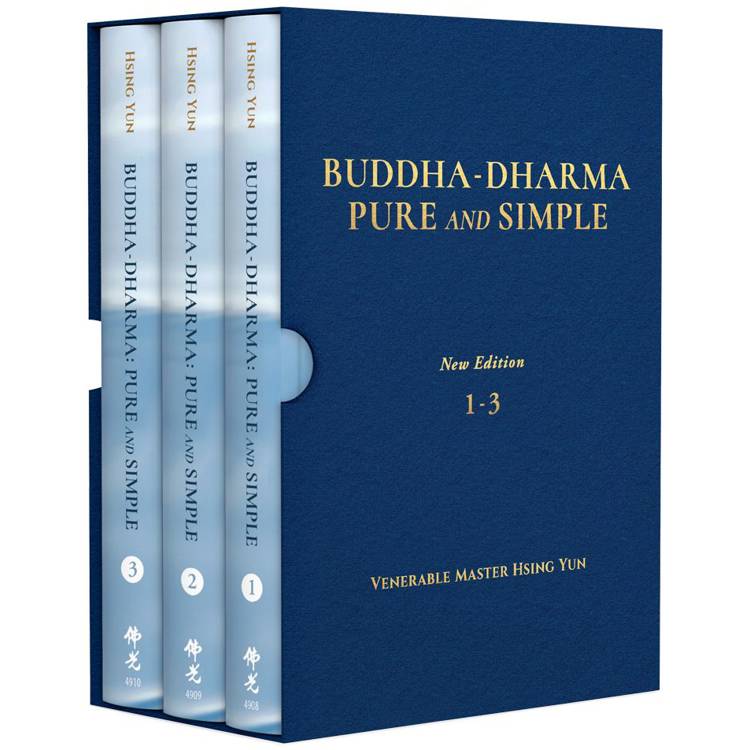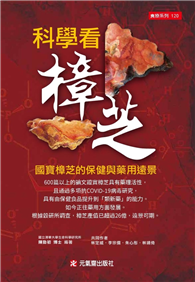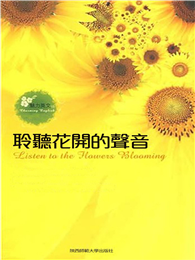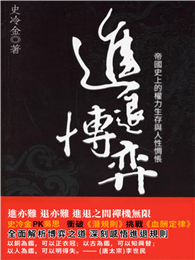In today’s Buddhist sphere, numerous claims have been made on what the Buddha has taught. However, were these teachings truly spoken by the Buddha? The Buddha-Dharma: Pure and Simple New Edition is an exploration of over 300 topics, where Venerable Master Hsing Yun clarifies the Buddha’s teachings in a way that is accessible and relevant to modern readers. Erroneous Buddhist views should be corrected, and the true meaning of the Buddha must be preserved to hold true to the original intents of the Buddha.
| FindBook |
有 4 項符合
Buddha-Dharma: Pure and Simple New Edition 1-3:佛法真義 A 21st Century Guide to Buddhist Teachings的圖書 |
 |
Buddha-Dharma: Pure and Simple New Edition 1-3(三冊/套)【金石堂、博客來熱銷】 作者:Venerable Master Hsing Yun星雲大師 出版社:佛光文化事業有限公司 出版日期:2024-09-06 |
| 圖書館借閱 |
| 國家圖書館 | 全國圖書書目資訊網 | 國立公共資訊圖書館 | 電子書服務平台 | MetaCat 跨館整合查詢 |
| 臺北市立圖書館 | 新北市立圖書館 | 基隆市公共圖書館 | 桃園市立圖書館 | 新竹縣公共圖書館 |
| 苗栗縣立圖書館 | 臺中市立圖書館 | 彰化縣公共圖書館 | 南投縣文化局 | 雲林縣公共圖書館 |
| 嘉義縣圖書館 | 臺南市立圖書館 | 高雄市立圖書館 | 屏東縣公共圖書館 | 宜蘭縣公共圖書館 |
| 花蓮縣文化局 | 臺東縣文化處 |
|
|
圖書介紹 - 資料來源:博客來 評分:
圖書名稱:Buddha-Dharma: Pure and Simple New Edition 1-3:佛法真義 A 21st Century Guide to Buddhist Teachings
內容簡介
作者介紹
作者簡介
Venerable Master Hsing Yun
Venerable Master Hsing Yun (1927–2023) was born in Jiangsu Province, China. He studied at various renowned Buddhist institutions such as Qixia Vinaya College and Jiaoshan Buddhist College.
Soon after his arrival in Taiwan in 1949, he became the chief editor of Human Life, a Buddhist magazine. In 1952, his efforts in establishing Buddhist Chanting Association strengthened the foundation for his subsequent endeavors in the promotion of the Dharma. Venerable Master founded Fo Guang Shan Monastery in 1967, with the primary goal of promoting Humanistic Buddhism through Buddhist education, culture, charity, and propagation of the Dharma. Since then, over two hundred branch temples have been established in major cities around the world. He has also set up art galleries, libraries, publishing houses, bookstores, mobile clinics, Buddhist colleges, and universities including: University of the West, Fo Guang University, Nanhua University, Nan Tien Institute, and Guang Ming College. In 1977, the Fo Guang Tripitaka Editorial Board was formed to compile the Fo Guang Buddhist Canon and the Fo Guang Dictionary of Buddhism. Many other works on Buddhism have also been published.
Venerable Master Hsing Yun has dedicated his life to propagating Humanistic Buddhism. As a global citizen, he fostered “joy and harmony,” “oneness and coexistence,” “respect and tolerance,” and “equality and peace” throughout the world. When he founded the Buddha’s Light International Association in 1991 and was elected president of its world headquarters, he was closer to realizing the ideal of having “the Buddha’s light shining throughout the three thousand realms, and the Dharma water flowing across the five continents.”
Venerable Master Hsing Yun
Venerable Master Hsing Yun (1927–2023) was born in Jiangsu Province, China. He studied at various renowned Buddhist institutions such as Qixia Vinaya College and Jiaoshan Buddhist College.
Soon after his arrival in Taiwan in 1949, he became the chief editor of Human Life, a Buddhist magazine. In 1952, his efforts in establishing Buddhist Chanting Association strengthened the foundation for his subsequent endeavors in the promotion of the Dharma. Venerable Master founded Fo Guang Shan Monastery in 1967, with the primary goal of promoting Humanistic Buddhism through Buddhist education, culture, charity, and propagation of the Dharma. Since then, over two hundred branch temples have been established in major cities around the world. He has also set up art galleries, libraries, publishing houses, bookstores, mobile clinics, Buddhist colleges, and universities including: University of the West, Fo Guang University, Nanhua University, Nan Tien Institute, and Guang Ming College. In 1977, the Fo Guang Tripitaka Editorial Board was formed to compile the Fo Guang Buddhist Canon and the Fo Guang Dictionary of Buddhism. Many other works on Buddhism have also been published.
Venerable Master Hsing Yun has dedicated his life to propagating Humanistic Buddhism. As a global citizen, he fostered “joy and harmony,” “oneness and coexistence,” “respect and tolerance,” and “equality and peace” throughout the world. When he founded the Buddha’s Light International Association in 1991 and was elected president of its world headquarters, he was closer to realizing the ideal of having “the Buddha’s light shining throughout the three thousand realms, and the Dharma water flowing across the five continents.”
目錄
VOLUME 1
About Venerable Master Hsing Yun
Translator’s Introduction
Preface
SPECIAL TRIBUTE
An Honest Revelation—An Open Letter
PART 1: BUDDHIST DOCTRINES
1. Taking Refuge in the Triple Gem
2. Upholding the Five Precepts
3. Generosity
4. Precepts
5. Patience
6. Diligence
7. Meditative Concentration
8. Prajna Wisdom
9. Loving-Kindness and Compassion
10. Suffering
11. Emptiness
12. Impermanence
13. Non-self
14. Middle Path
15. The Four Elements Are Not Empty
16. Four Noble Truths
17. Four Immeasurables
18. Four Means of Embracing
19. Four Reliances
20. Four Dharma Realms
21. Four Universal Vows
22. The Law of Cause and Effect Across the Three Time Periods
23. Twelve Links of Dependent Origination
24. Nirvana
25. The Path to Liberation
26. Bodhi Mind
27. Absolute Emptiness
28. Affliction is Bodhi
29. One is Many
30. Motion and Stillness are One
31. Listening, Contemplation, and Practice
32. Transforming Cognitive Knowledge into Prajna Wisdom
33. Across All of Time and All of Space
34. Understanding “Essence, Attribute, and Influence”
35. Equality
36. Faith
37. Aspiration
38. Remorse
39. Repentance
40. Vow
41. Dedication of Merits
42. Causes, Conditions, and Effects
43. Dharma Gate of Non-Duality
44. Thus Have I Heard
45. Dual Cultivation of Merit and Wisdom
46. Old Age, Sickness, Death, and Rebirth
47. Transcending Birth and Death
48. Buddha’s Light Verse
49. The Uniquely Honored One
50. Giving of Fearlessness
51. Honored One Among Two-Legged Beings
52. Amitabha Buddha
53. Who is the Buddha’s Mother
54. Metaphors of Cyclic Existence
55. Rely on the Self, Rely on the Dharma
56. Listen Mindfully
57. Believe, Accept, and Uphold the Dharma
58. Equality in Giving and Receiving
59. Noble Eightfold Path
60. Eight Winds
61. Six Points of Reverent Harmony
62. Dharma Abode
63. A Drop of Water
64. Metaphors of the Mind
65. The Mind as a Factory
66. Ordinary Mind
67. No Truth Beyond the Mind
68. Expedient Means
69. Awakening
70. Three Acts of Goodness
71. Four Givings
72. Six Sense Organs
73. Cultivation
74. Divine Connection
75. Letting Go
76. Giving and Receiving
77. Field of Merit
78. Wealth
79. The Ten Vows of Samantabhadra Bodhisattva
80. Four Advices from Four Sutras
81. Four Small Things Not to be Taken Lightly
82. Master Daosheng Expounds the Dharma
83. Beyond Words
84. The Small Matters of Birth and Death
85. Understanding Precepts
86. Understanding Patience
87. The Meaning of Cause and Effect
88. Ten Names of the Tathagata
89. Understanding Austerities
90. Transcending Desire
91. Destiny and Causes and Conditions
92. Blessings and Elimination of Karma
93. Empowerment and Deliverance
94. Queries and Conceptual Proliferation
95. Karmic Rewards and Retributions
Notes
Index
VOLUME 2
SECTION 1: BUDDHIST DOCTRINES
96. Genetic Modification
97. Unrighteous Generosity
98. Improper Reliances
99. Húshuō Bādào
100. Human Deification
101. On Souls
SECTION 2: BUDDHIST PHILOSOPHY AND THOUGHT
1. Buddha, Where are You?
2. Practice the Buddha’s Way
3. I Am a Buddha
4. Each and Every Buddha Walks on the Same Path
5. Oneness and Coexistence
6. Global Citizen
7. Great Nirvana
8. Pick Up and Let Go with Perfect Ease
9. Sudden and Gradual Enlightenment Are As Equals
10. Gender Equality
11. The Importance of Equality
12. Stages of Aspiration
13. Understanding Generosity
14. Taking Refuge
15. Five Harmonies
16. Seven Admonishments
17. Joy
18. Auspiciousness
19. Shine with Light
20. Relics
21. Austerities
22. Stick and Shout
23. Idolization
24. Chan Associates
25. Never Disparage
26. Martyrdom
27. Repayment of Kindness
28. Eliminating Calamity and Hindrances
29. Dharma is Our Home
30. Who Am I?
31. Solving Our Own Problems
32. I am Among the Multitude
33. Having By Not Wanting
34. Give Others Causes and Conditions
35. Reciprocal Donation
36. Be Your Own Mentor
37. Who is the God of Wealth?
38. Where There is the Dharma, There is a Way
39. Being Used by Others Shows One’s True Worth
40. Never Forget One’s Initial Aspirations
41. The Beauty in Enjoyment
42. Do What is in Accordance with the Buddha
43. Keeping Money in the Hands of Devotee
44. Half-and-Half
45. Keeping People in Mind
46. What is the Value of Life?
47. Infinite Life
48. Think Outside the Box
49. Unreasonableness and Unfeelingness
50. Every Day is a Good Day
51. A Step Back is a Step Forward
52. Monastics are Without Families
53. The Triple Gems of Religion: Each Father to Their Own
54. Heaven, Earth, Humanity
55. Filial Piety
56. Befriending Illness
57. Three Parts Guidance, Seven Parts Friendship
58. Legacy
59. Indestructible Diamond
60. Dispel What is Wrong and Reveal What is Right
61. Original and Manifested Bodies
62. Fortune-Telling Sticks and Dharma Words
63. Faith Or Fear
64. The Act and the Intention of Killing
65. Life-Releasing or Life-Ending
66. Buddhism and Politics
67. Buddhism and Environmental Preservation
68. Environmental and Spiritual Preservation
69. Profound Discussion and Practical Actions
70. Prajna and Wisdom
71. Ten Sramanera Precepts
72. Eight Garudharmas
73. Mahayana Buddhism is Not Spoken by the Buddha
74. Is it the Age of Declining Dharma When Lay Buddhists Teach?
75. Can Plants Become Buddhas?
76. Will Hell Be Emptied?
77. Significance of the Attendance List in the Amitabha Sutra
78. Recognizing Chan Master Shenxiu
79. Recognizing Mazu
80. Underground Palaces
81. Eighteen Arhats
82. Kim Gyo-gak
83. Eight Groups of Heavenly Beings
84. Sacrificing Body and Flesh to Feed Eagles and Tigers
85. Not Going Against the Will of Others
86. Aligning the Eyes, Nose, and Chest
87. Eminent Masters are Born from Austerities
88. Song of the Ten Practices and Cultivations
89. To Whom the Chants Are Offered?
90. We Need Three Homes
91. A Temple is Like a Gas Station
92. Recording the History of Devotees
93. Age for Renunciation
94. A Monastic’s Possessions
95. Renunciation in Youth or Adulthood
96. New Ways of Dharma Propagation
97. Buddhist Anthem
98. Crisis Awareness
99. Organ Donation
100. Hospice Care
101. Legend of the White Snake
Notes
Index
VOLUME 3
SECTION 3: BUDDHIST CULTURE AND TRADITION
1. Did the Buddha Express Anger?
2. Does Arhats Commit Killing, Stealing, and Sensual Conduct?
3. Where are Heaven and Hell Found?
4. Was the Sixth Patriarch Illiterate?
5. Where Can Mentors Be Found?
6. Where Does One Abide?
7. Types of Faith
8. Significance of Short-Term Monastic Retreat
9. Significance of the Buddhist Flag
10. Buddha Selection Court
11. Supernatural Powers
12. Spiritual Retreat
13. Consecration Ceremony
14. First Incense, First Bell, and First Drum
15. Light Offering
16. Joined Palms
17. Prostration
18. Formal Meal
19. Making Offerings
20. No Eating After Noon
21. Alms Procession
22. Blessed with Merit
23. Renunciation
24. Most Venerable
25. Guest Receptionist
26. Dharma Friend
27. Dharma Protector
28. The Merits of Rejoicing in Others’ Virtues
29. The Essence of Offering to the Sangha
30. The Benefits of a Vegetarian Diet
31. Rebirth
32. Deities
33. Ghosts
34. Unhuman
35. Young Boy and Young Girl
36. Caigu and Shigu
37. Bodhisattva and Volunteer
38. Avalokitesvara
39. Mahasattva
40. Cloud and Water Practices
41. Skillful Teachings
42. Ten Hardships of the Buddha
43. Three Meetings Beneath the Dragon-Flower Tree
44. Eradicating Calamities and Obstructions for Yasodhara
45. Hong Kong Was Developed by Buddhist Monastics
46. The Original Journey to the West
47. Roaming Jianghu
48. Misty-Minded
49. Beauty
50. Four Kinds of Comportment
51. To Speak Gently and Steadily
52. Haiqing and Changshan
53. Siksamana
54. Sickbay
55. The Foremost Scripture
56. Karmic Debt
57. Neither Aging nor Decaying
58. A Sesame Seed and a Grain of Wheat
59. Renouncing and Disrobing
60. Tudigong
61. Modern-day Bodhisattvas
62. Zhao Puchu Bodhisattva
63. Yang Renshan Bodhisattva
SECTION 4: BUDDHIST ENDEAVORS
1. Reforming and Revitalizing Buddhism
2. Substituting the Vinaya with Pure Regulations
3. Reforming the Monastic System
4. On the Vinaya
5. Improving the Five Sessions of Daily Practices
6. Formalities in Life
7. Celebrations of the Triple Gem
8. Buddhist Exam
9. Lay Dharma Lecturer
10. Fo Guang Family Gathering
11. Spring Couplets
12. Buddhist Wedding
13. Water Drop Teahouse
14. Significance of the Million-Member Fundraising Campaign
15. Short-Term Monastic Retreat
16. Rains Retreat
17. Itinerant Practice
18. Traveling to Learn
19. Pilgrimage
20. Personal Practice
21. Collective Cultivation
22. Devotees Assembly
23. Dharma Service
24. Building Affinities
25. Foundation Laying Ceremony
26. Eternal Lamp
27. Evening, Midnight, and Late Night
28. Water and Land Dharma Service
29. Eight Precepts Retreat
30. Six Uposatha Days
31. The Fifty-Three Visits
32. Dharma Propagation Through Arts and Culture
33. Buddhist Endeavors Through Sounds and Music
34. Advancing Education in Temples
35. Endeavors for Dharma Propagation
36. Religious Legislation
37. Buddhism and Physical Activity
38. Buddhist Architecture
39. Master and Disciple
40. The Importance of Passing Down Legacy
41. Mutual Praise Between Monastics
42. Between Country and Religion
Notes
Index
About Venerable Master Hsing Yun
Translator’s Introduction
Preface
SPECIAL TRIBUTE
An Honest Revelation—An Open Letter
PART 1: BUDDHIST DOCTRINES
1. Taking Refuge in the Triple Gem
2. Upholding the Five Precepts
3. Generosity
4. Precepts
5. Patience
6. Diligence
7. Meditative Concentration
8. Prajna Wisdom
9. Loving-Kindness and Compassion
10. Suffering
11. Emptiness
12. Impermanence
13. Non-self
14. Middle Path
15. The Four Elements Are Not Empty
16. Four Noble Truths
17. Four Immeasurables
18. Four Means of Embracing
19. Four Reliances
20. Four Dharma Realms
21. Four Universal Vows
22. The Law of Cause and Effect Across the Three Time Periods
23. Twelve Links of Dependent Origination
24. Nirvana
25. The Path to Liberation
26. Bodhi Mind
27. Absolute Emptiness
28. Affliction is Bodhi
29. One is Many
30. Motion and Stillness are One
31. Listening, Contemplation, and Practice
32. Transforming Cognitive Knowledge into Prajna Wisdom
33. Across All of Time and All of Space
34. Understanding “Essence, Attribute, and Influence”
35. Equality
36. Faith
37. Aspiration
38. Remorse
39. Repentance
40. Vow
41. Dedication of Merits
42. Causes, Conditions, and Effects
43. Dharma Gate of Non-Duality
44. Thus Have I Heard
45. Dual Cultivation of Merit and Wisdom
46. Old Age, Sickness, Death, and Rebirth
47. Transcending Birth and Death
48. Buddha’s Light Verse
49. The Uniquely Honored One
50. Giving of Fearlessness
51. Honored One Among Two-Legged Beings
52. Amitabha Buddha
53. Who is the Buddha’s Mother
54. Metaphors of Cyclic Existence
55. Rely on the Self, Rely on the Dharma
56. Listen Mindfully
57. Believe, Accept, and Uphold the Dharma
58. Equality in Giving and Receiving
59. Noble Eightfold Path
60. Eight Winds
61. Six Points of Reverent Harmony
62. Dharma Abode
63. A Drop of Water
64. Metaphors of the Mind
65. The Mind as a Factory
66. Ordinary Mind
67. No Truth Beyond the Mind
68. Expedient Means
69. Awakening
70. Three Acts of Goodness
71. Four Givings
72. Six Sense Organs
73. Cultivation
74. Divine Connection
75. Letting Go
76. Giving and Receiving
77. Field of Merit
78. Wealth
79. The Ten Vows of Samantabhadra Bodhisattva
80. Four Advices from Four Sutras
81. Four Small Things Not to be Taken Lightly
82. Master Daosheng Expounds the Dharma
83. Beyond Words
84. The Small Matters of Birth and Death
85. Understanding Precepts
86. Understanding Patience
87. The Meaning of Cause and Effect
88. Ten Names of the Tathagata
89. Understanding Austerities
90. Transcending Desire
91. Destiny and Causes and Conditions
92. Blessings and Elimination of Karma
93. Empowerment and Deliverance
94. Queries and Conceptual Proliferation
95. Karmic Rewards and Retributions
Notes
Index
VOLUME 2
SECTION 1: BUDDHIST DOCTRINES
96. Genetic Modification
97. Unrighteous Generosity
98. Improper Reliances
99. Húshuō Bādào
100. Human Deification
101. On Souls
SECTION 2: BUDDHIST PHILOSOPHY AND THOUGHT
1. Buddha, Where are You?
2. Practice the Buddha’s Way
3. I Am a Buddha
4. Each and Every Buddha Walks on the Same Path
5. Oneness and Coexistence
6. Global Citizen
7. Great Nirvana
8. Pick Up and Let Go with Perfect Ease
9. Sudden and Gradual Enlightenment Are As Equals
10. Gender Equality
11. The Importance of Equality
12. Stages of Aspiration
13. Understanding Generosity
14. Taking Refuge
15. Five Harmonies
16. Seven Admonishments
17. Joy
18. Auspiciousness
19. Shine with Light
20. Relics
21. Austerities
22. Stick and Shout
23. Idolization
24. Chan Associates
25. Never Disparage
26. Martyrdom
27. Repayment of Kindness
28. Eliminating Calamity and Hindrances
29. Dharma is Our Home
30. Who Am I?
31. Solving Our Own Problems
32. I am Among the Multitude
33. Having By Not Wanting
34. Give Others Causes and Conditions
35. Reciprocal Donation
36. Be Your Own Mentor
37. Who is the God of Wealth?
38. Where There is the Dharma, There is a Way
39. Being Used by Others Shows One’s True Worth
40. Never Forget One’s Initial Aspirations
41. The Beauty in Enjoyment
42. Do What is in Accordance with the Buddha
43. Keeping Money in the Hands of Devotee
44. Half-and-Half
45. Keeping People in Mind
46. What is the Value of Life?
47. Infinite Life
48. Think Outside the Box
49. Unreasonableness and Unfeelingness
50. Every Day is a Good Day
51. A Step Back is a Step Forward
52. Monastics are Without Families
53. The Triple Gems of Religion: Each Father to Their Own
54. Heaven, Earth, Humanity
55. Filial Piety
56. Befriending Illness
57. Three Parts Guidance, Seven Parts Friendship
58. Legacy
59. Indestructible Diamond
60. Dispel What is Wrong and Reveal What is Right
61. Original and Manifested Bodies
62. Fortune-Telling Sticks and Dharma Words
63. Faith Or Fear
64. The Act and the Intention of Killing
65. Life-Releasing or Life-Ending
66. Buddhism and Politics
67. Buddhism and Environmental Preservation
68. Environmental and Spiritual Preservation
69. Profound Discussion and Practical Actions
70. Prajna and Wisdom
71. Ten Sramanera Precepts
72. Eight Garudharmas
73. Mahayana Buddhism is Not Spoken by the Buddha
74. Is it the Age of Declining Dharma When Lay Buddhists Teach?
75. Can Plants Become Buddhas?
76. Will Hell Be Emptied?
77. Significance of the Attendance List in the Amitabha Sutra
78. Recognizing Chan Master Shenxiu
79. Recognizing Mazu
80. Underground Palaces
81. Eighteen Arhats
82. Kim Gyo-gak
83. Eight Groups of Heavenly Beings
84. Sacrificing Body and Flesh to Feed Eagles and Tigers
85. Not Going Against the Will of Others
86. Aligning the Eyes, Nose, and Chest
87. Eminent Masters are Born from Austerities
88. Song of the Ten Practices and Cultivations
89. To Whom the Chants Are Offered?
90. We Need Three Homes
91. A Temple is Like a Gas Station
92. Recording the History of Devotees
93. Age for Renunciation
94. A Monastic’s Possessions
95. Renunciation in Youth or Adulthood
96. New Ways of Dharma Propagation
97. Buddhist Anthem
98. Crisis Awareness
99. Organ Donation
100. Hospice Care
101. Legend of the White Snake
Notes
Index
VOLUME 3
SECTION 3: BUDDHIST CULTURE AND TRADITION
1. Did the Buddha Express Anger?
2. Does Arhats Commit Killing, Stealing, and Sensual Conduct?
3. Where are Heaven and Hell Found?
4. Was the Sixth Patriarch Illiterate?
5. Where Can Mentors Be Found?
6. Where Does One Abide?
7. Types of Faith
8. Significance of Short-Term Monastic Retreat
9. Significance of the Buddhist Flag
10. Buddha Selection Court
11. Supernatural Powers
12. Spiritual Retreat
13. Consecration Ceremony
14. First Incense, First Bell, and First Drum
15. Light Offering
16. Joined Palms
17. Prostration
18. Formal Meal
19. Making Offerings
20. No Eating After Noon
21. Alms Procession
22. Blessed with Merit
23. Renunciation
24. Most Venerable
25. Guest Receptionist
26. Dharma Friend
27. Dharma Protector
28. The Merits of Rejoicing in Others’ Virtues
29. The Essence of Offering to the Sangha
30. The Benefits of a Vegetarian Diet
31. Rebirth
32. Deities
33. Ghosts
34. Unhuman
35. Young Boy and Young Girl
36. Caigu and Shigu
37. Bodhisattva and Volunteer
38. Avalokitesvara
39. Mahasattva
40. Cloud and Water Practices
41. Skillful Teachings
42. Ten Hardships of the Buddha
43. Three Meetings Beneath the Dragon-Flower Tree
44. Eradicating Calamities and Obstructions for Yasodhara
45. Hong Kong Was Developed by Buddhist Monastics
46. The Original Journey to the West
47. Roaming Jianghu
48. Misty-Minded
49. Beauty
50. Four Kinds of Comportment
51. To Speak Gently and Steadily
52. Haiqing and Changshan
53. Siksamana
54. Sickbay
55. The Foremost Scripture
56. Karmic Debt
57. Neither Aging nor Decaying
58. A Sesame Seed and a Grain of Wheat
59. Renouncing and Disrobing
60. Tudigong
61. Modern-day Bodhisattvas
62. Zhao Puchu Bodhisattva
63. Yang Renshan Bodhisattva
SECTION 4: BUDDHIST ENDEAVORS
1. Reforming and Revitalizing Buddhism
2. Substituting the Vinaya with Pure Regulations
3. Reforming the Monastic System
4. On the Vinaya
5. Improving the Five Sessions of Daily Practices
6. Formalities in Life
7. Celebrations of the Triple Gem
8. Buddhist Exam
9. Lay Dharma Lecturer
10. Fo Guang Family Gathering
11. Spring Couplets
12. Buddhist Wedding
13. Water Drop Teahouse
14. Significance of the Million-Member Fundraising Campaign
15. Short-Term Monastic Retreat
16. Rains Retreat
17. Itinerant Practice
18. Traveling to Learn
19. Pilgrimage
20. Personal Practice
21. Collective Cultivation
22. Devotees Assembly
23. Dharma Service
24. Building Affinities
25. Foundation Laying Ceremony
26. Eternal Lamp
27. Evening, Midnight, and Late Night
28. Water and Land Dharma Service
29. Eight Precepts Retreat
30. Six Uposatha Days
31. The Fifty-Three Visits
32. Dharma Propagation Through Arts and Culture
33. Buddhist Endeavors Through Sounds and Music
34. Advancing Education in Temples
35. Endeavors for Dharma Propagation
36. Religious Legislation
37. Buddhism and Physical Activity
38. Buddhist Architecture
39. Master and Disciple
40. The Importance of Passing Down Legacy
41. Mutual Praise Between Monastics
42. Between Country and Religion
Notes
Index
序
譯者序 Translator’s Introduction
Buddha-Dharma: Pure and Simple by Venerable Master Hsing Yun, the Founding Master of Fo Guang Shan, is a profound exploration of Buddhist teachings that seeks to distill the essence of the Buddha’s wisdom into clear and accessible language. The original 307-article, three-volume Chinese edition was published in 2017. In 2019, 50 articles were translated into English and published as the first installment, well-received as a 21st-century guide to Humanistic Buddhism. The following five installments were consequently released from 2020 to 2023, offering a Dharma guide during the COVID-19 pandemic. This year, in memory of Venerable Master Hsing Yun, we are releasing a revised edition with articles arranged in their original Chinese three-volume format.
This collection includes a special addition of the Venerable Master’s “An Honest Revelation—An Open Letter,” which details the final words of a 90-year-old monk devoted to Humanistic Buddhism and service to all sentient beings. It is followed by individual articles divided into four sections: (1) Buddhist doctrine, providing insight into fundamental Buddhist teachings; (2) Buddhist philosophy and thought, encouraging readers to contemplate the connection between Buddha-Dharma and living, and inspiring them to integrate the Dharma into everyday life; (3) Buddhist culture and tradition, taking readers a look into Buddhism’s rich 2500-year history; and (4) Buddhist endeavors, illustrating ways practitioners can embody the bodhisattva spirit and participate in Buddhist activities.
Certain articles describe issues specific to Indian or Chinese Buddhism. To assist in the reading experience, terminology that does not translate well into English is kept in either romanized Sanskrit or Chinese pinyin. Furthermore, the Notes section provides additional elaboration on these practices, literature, individuals, rituals, or traditions. An Index is also provided at the end of each volume for quick research based on key terms.
The Venerable Master believed that the legacy of the Buddha’s teachings must be shared and preserved through cultural and educational endeavors. Since his passing on February 5, 2023, we hope to continue honoring his profound wisdom and deep compassion by translating and publishing his writings. May Buddha-Dharma: Pure and Simple New Edition be a beacon on your journey in learning and practicing the Dharma.
Venerable Miao Guang
Editor-in-Chief
July 2024
Buddha-Dharma: Pure and Simple by Venerable Master Hsing Yun, the Founding Master of Fo Guang Shan, is a profound exploration of Buddhist teachings that seeks to distill the essence of the Buddha’s wisdom into clear and accessible language. The original 307-article, three-volume Chinese edition was published in 2017. In 2019, 50 articles were translated into English and published as the first installment, well-received as a 21st-century guide to Humanistic Buddhism. The following five installments were consequently released from 2020 to 2023, offering a Dharma guide during the COVID-19 pandemic. This year, in memory of Venerable Master Hsing Yun, we are releasing a revised edition with articles arranged in their original Chinese three-volume format.
This collection includes a special addition of the Venerable Master’s “An Honest Revelation—An Open Letter,” which details the final words of a 90-year-old monk devoted to Humanistic Buddhism and service to all sentient beings. It is followed by individual articles divided into four sections: (1) Buddhist doctrine, providing insight into fundamental Buddhist teachings; (2) Buddhist philosophy and thought, encouraging readers to contemplate the connection between Buddha-Dharma and living, and inspiring them to integrate the Dharma into everyday life; (3) Buddhist culture and tradition, taking readers a look into Buddhism’s rich 2500-year history; and (4) Buddhist endeavors, illustrating ways practitioners can embody the bodhisattva spirit and participate in Buddhist activities.
Certain articles describe issues specific to Indian or Chinese Buddhism. To assist in the reading experience, terminology that does not translate well into English is kept in either romanized Sanskrit or Chinese pinyin. Furthermore, the Notes section provides additional elaboration on these practices, literature, individuals, rituals, or traditions. An Index is also provided at the end of each volume for quick research based on key terms.
The Venerable Master believed that the legacy of the Buddha’s teachings must be shared and preserved through cultural and educational endeavors. Since his passing on February 5, 2023, we hope to continue honoring his profound wisdom and deep compassion by translating and publishing his writings. May Buddha-Dharma: Pure and Simple New Edition be a beacon on your journey in learning and practicing the Dharma.
Venerable Miao Guang
Editor-in-Chief
July 2024
|











